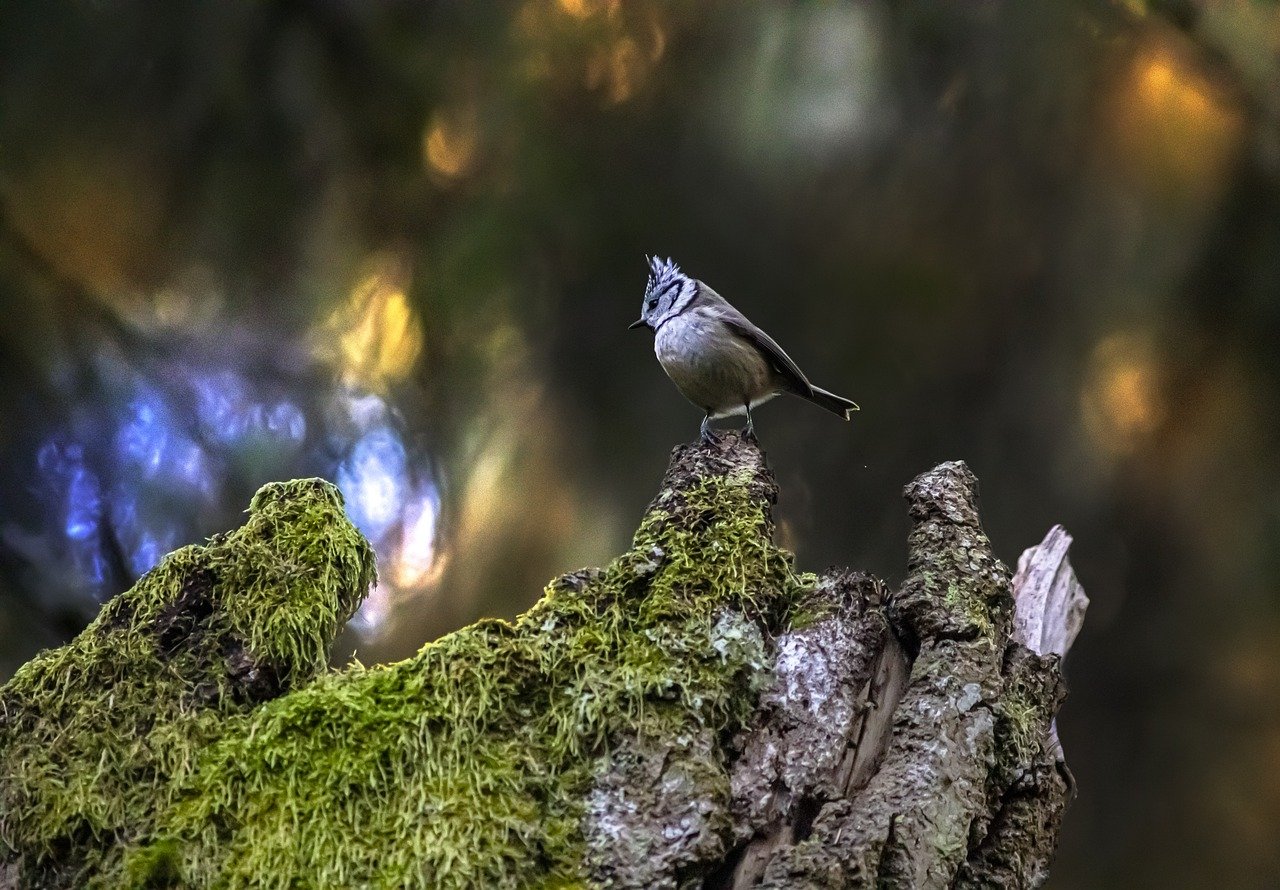The European Crested Tit (Lophophanes cristatus), also known as the Crested Tit, is a small, striking bird native to parts of Europe, particularly known for its prominent head crest. Here’s a quick overview:
Physical Description:
- Size: 11–12 cm in length, with a wingspan of 17–20 cm.
- Weight: 10–13 grams.
- Coloration:
- Crest: The most distinctive feature is its black-and-white patterned crest, which stands erect on its head.
- Head: Black around the eyes, throat, and bib, with white cheeks.
- Body: Pale brownish-grey upperparts and whitish underparts.
Habitat:
- Range: Found in central, northern, and eastern Europe, including parts of the UK (Scotland), Scandinavia, and the Pyrenees.
- Preferred Habitat: Crested tits primarily inhabit coniferous and mixed forests, particularly in areas with pine and spruce trees. They are also found in deciduous woods during winter and occasionally in parks and gardens.
Behavior:
- Feeding: Their diet consists mainly of insects, spiders, and seeds, especially pine and spruce seeds. In the winter, they are known to visit bird feeders for suet and seeds.
- Movement: These birds are agile and often seen hopping through branches, searching for food. They are generally non-migratory but may move short distances in response to harsh weather conditions.
Vocalizations:
- The Crested Tit’s call is a series of high-pitched notes, including a characteristic “zee, zee, zee” sound. Their song is a repeated series of trills and whistles.
Breeding:
- Nests: They nest in holes in old trees, often using natural cavities or abandoned woodpecker nests. The nest is made from moss, feathers, and soft plant materials.
- Eggs: Crested tits lay 5–7 eggs, which are incubated for about 14–16 days. Both parents participate in feeding the young, who fledge after 19–21 days.
Conservation:
- Status: Classified as “Least Concern” by the IUCN, though they are less common in some regions due to habitat loss and deforestation.
The European Crested Tit is a visually distinctive bird, easily recognizable by its bold crest and active behavior, often adding lively activity to the coniferous forests of Europe.
Visited 815 times, 2 visit(s) today
Views: 1089
Subscribe to the newsletter:
